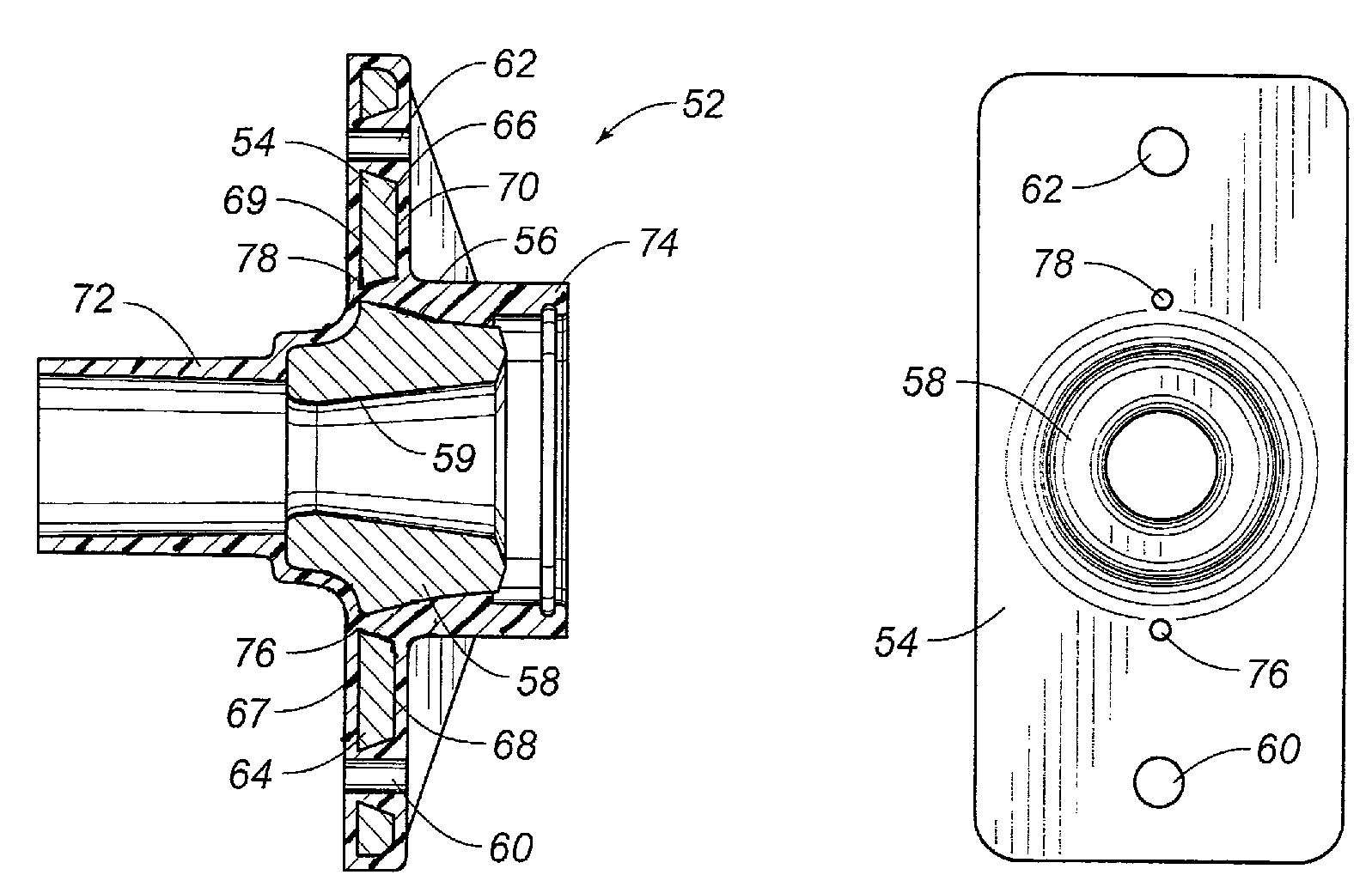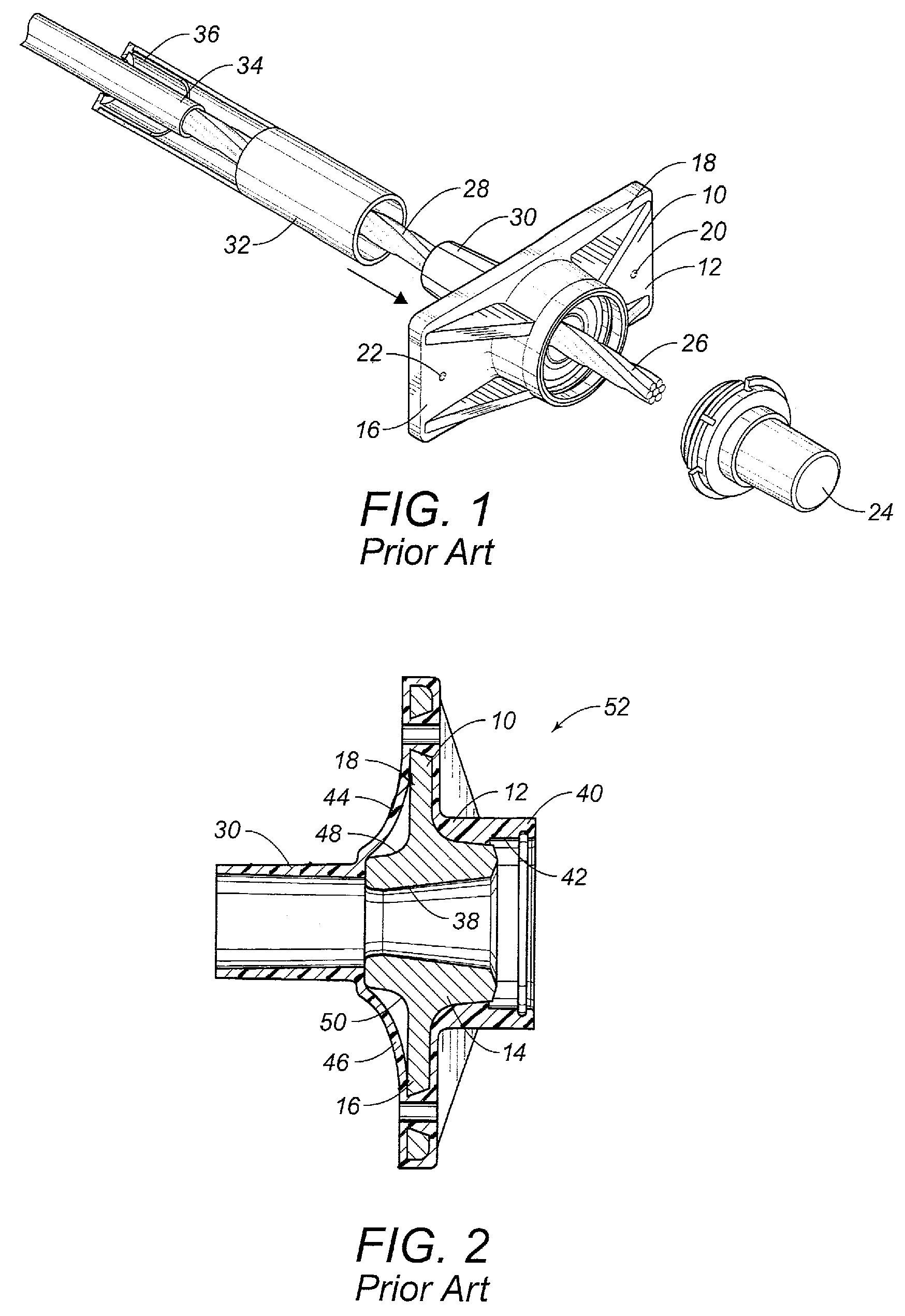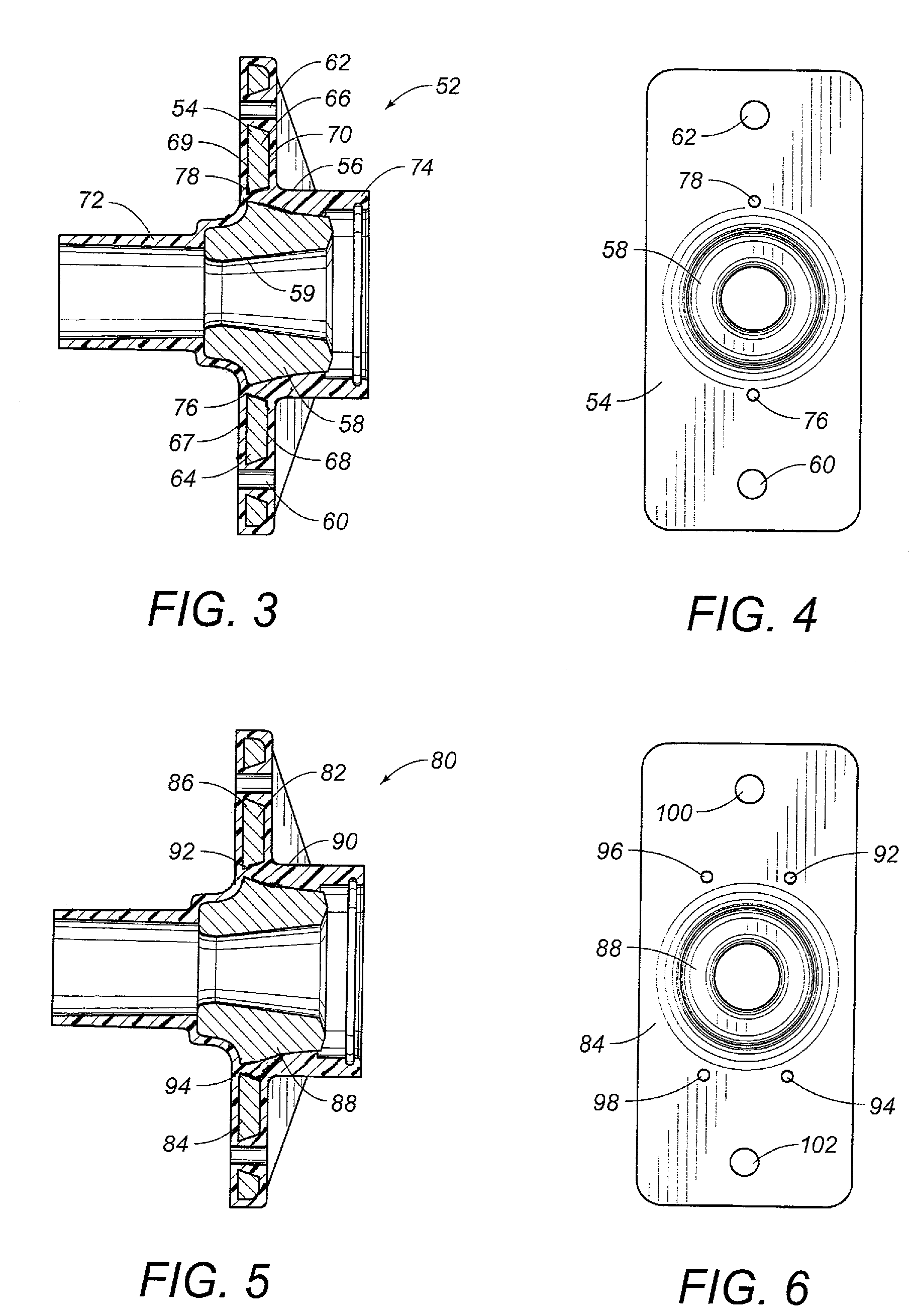Tendon tensioning anchor system having polymeric encapsulation with reduced shrinkage effects
a technology of polymeric encapsulation and tensile anchors, which is applied in the direction of building components, building reinforcements, constructions, etc., can solve the problems of insufficient use of concrete full potentialities, weak carrying of significant tensile loads, and inability to carry structural concrete load
- Summary
- Abstract
- Description
- Claims
- Application Information
AI Technical Summary
Benefits of technology
Problems solved by technology
Method used
Image
Examples
Embodiment Construction
[0035]Referring to FIG. 3, there is shown the tendon tensioning anchor 52 in accordance with the preferred embodiment of the present invention. The tendon tensioning anchor 52 includes a base member 54 having a polymeric encapsulation 56 extending thereover and therearound. In particular, the base member 54 is a steel construction anchor having a tubular section 58 extending outwardly centrally thereof. The tubular section 58 has a sloping annular interior wall 59 suitable for receiving a tendon therein. The anchor 54 includes nail holes 60 and 62 formed through the respective flanges 64 and 66. Flanges 64 and 66 extend outwardly on opposite sides of the tubular section 58. Flange 64 has a first surface 67 and a second surface 68. The flange 66 has a first surface 69 and a second surface 70.
[0036]The polymeric encapsulation 56 will extend over and around the tubular section 58 and over and around the flanges 64 and 66. The polymeric encapsulation will also define a tubular portion 7...
PUM
 Login to View More
Login to View More Abstract
Description
Claims
Application Information
 Login to View More
Login to View More - R&D
- Intellectual Property
- Life Sciences
- Materials
- Tech Scout
- Unparalleled Data Quality
- Higher Quality Content
- 60% Fewer Hallucinations
Browse by: Latest US Patents, China's latest patents, Technical Efficacy Thesaurus, Application Domain, Technology Topic, Popular Technical Reports.
© 2025 PatSnap. All rights reserved.Legal|Privacy policy|Modern Slavery Act Transparency Statement|Sitemap|About US| Contact US: help@patsnap.com



